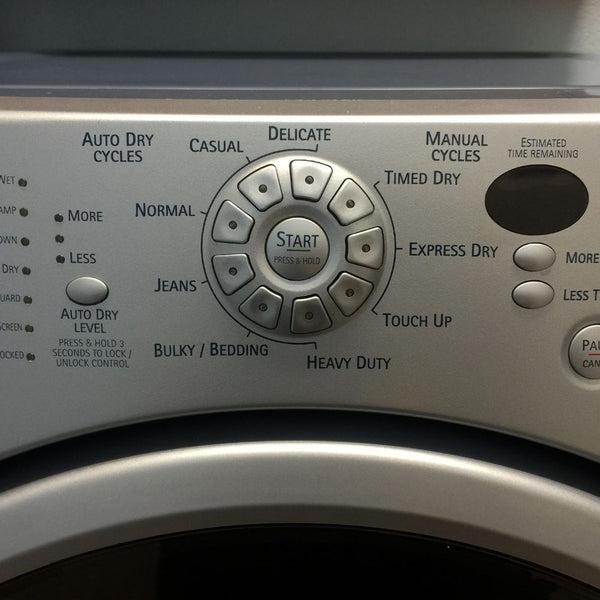
You might think your dryer was a one-time purchase. However, It’s easy to miss the hidden costs that come with owning it. Buying an electric dryer isn’t a short-term investment. You’ll need to shell out money over time for energy, water, and maintenance costs. Here, we’ll analyze the first part of the equation—energy—to determine how much it’ll cost you to power your dryer and how you can save money in the long run and cut energy costs. Learn more about how much energy your dryer uses per year below.
How Much Energy Does It Use?
On average, considering all cycle configurations and loads, electric clothes dryers use about 1700–5100 watts of energy. By calculating how much energy your dryer uses, you can better monitor the outlook of your laundry routine and make necessary changes. Let’s learn how to calculate how much energy your dryer uses per year.
Learn To Calculate Your Usage
To determine how much your dryer is costing you, start by taking the dryer’s wattage—its kWh would be in the manufacturer’s manual—and divide this number by 1,000. Multiply that by the cost per kilowatt hour of electricity in the city you live in. If your drying cycle takes an hour or so, take that into account with your energy consumption costs on a one-load basis. After that, you’ll know how much your dryer costs you personally. What do you do if your energy consumption is on the higher end of the energy scale or even above 5100 watts? You can make some changes both before buying your dryer and after you have one.
Choosing an Energy-Efficient Dryer
When buying a dryer, one of the first things you should look for is an Energy Star seal. If you can’t find one, ask the salesperson you’re talking to if it’s Energy Star certified, or check the “description” section online for the dryer. Overall, Energy Star models use much less energy. You might also consider a ventless dryer as these dryers don’t hook up to an exhaust pipe, and they use less energy.
Types of Dryers and Their Energy Use
Different types of dryers have varying energy consumption rates. For instance, a heat pump dryer is known for its energy efficiency, using about 40-50% less energy than a conventional dryer. On the other hand, a gas dryer might cost more upfront but can save money in the long run due to lower electricity costs. You can install an electric dryer, or get installation assistance from Town Appliance. Consider that tumble dryers and vented dryers each have their own energy use profiles, with condenser dryers typically being more energy-efficient.
Tips for Reducing Dryer Energy Costs
To save energy and money while using your dryer, you should also dry as many clothes as possible without overloading the dryer. Doing one big load rather than six little ones throughout the day will help you avoid a high energy bill. Using dryer balls can help reduce drying time, while dryer sheets can improve drying efficiency by reducing static.
Another tip is to ensure your dryer vent is clean. A clogged vent can cause your dryer to use more energy. Regular maintenance of your washer dryer combo or separate units can also contribute to better energy efficiency. Lastly, consider using a lower heat setting or air-dry option if your dryer has one, as these settings use less energy.
Save Your Energy Bill with Town Appliance
That’s a rundown of how to save money with your dryer. If you’re looking at a gas vs electric dryer, you can purchase both here at Town Appliance. Remember, understanding your dryer's energy consumption and choosing energy-efficient models can significantly reduce your electricity costs and environmental impact.
Embrace energy-saving tips and make informed decisions to keep your laundry routine efficient and cost-effective.








